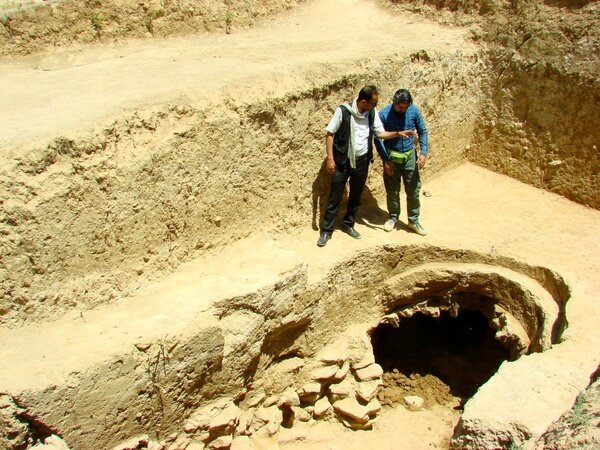Nahavand may attract more travelers due to archaeological feats

TEHRAN– Archaeological traces of Seleucid occupation in Nahavad may help turn the ancient Iranian city to be a major destination for cultural tourism, an archaeologist has said.
“The discovery of a tumulus-shaped tomb in the Nagarechi hill will revolutionize the tourism of Nahavand, and we are waiting for funding to start the third season of excavation in this area,” Mohsen Khanjan, who led the previous excavation, said on Tuesday.
“So far, the results of these excavations have strengthened the connection between the temple of Laodicea and Naqarachi, and currently it has ended in a tumulus tomb of the Seleucid period, which is the first tumulus tomb discovered in Iran.”
Such archaeological surveys can reveal many dark corners of the country's history during the Seleucid period, Khanjan added.
What is achieved in Tepe (the hill of) Naqarechi was noticed by foreign media and this is considered a turning point for attracting foreign tourists to the city, the archaeologist added.
“If credit is provided for the third season of excavation on Naqarechi hill, it will certainly create a special situation in tourism and tourist attraction for Hamedan province, and Nahavand in particular.”
Earlier in May, archaeologists said they had discovered what was believed to be the tomb of a Seleucid satrap or general in Hamedan, providing an extraordinary insight into the Hellenistic life in west-central Iran.
The discovery is made in Tepe Naqarechi near what archaeologists have long been tracing to unearth the Seleucid Laodicea Temple under the modern town of Nahavand in Hamedan province.
Naqarechi is a circular hill with a height of about eight meters situated among orchards in the southeast of Nahavand,” Khanjan said.
“Nahavand was one of the towns that Seleucids built during their Iran rule over occupied Iran, using their artisans, teachers, artists, historians, traders, … to Greekize Iranian land.”
The archaeologist said the recent discovery might be a clue about the detection of Seleucid burial rituals in Iran or even their inspirations from Iranians of the time. “Due to the scarcity of the so-far discovered Seleucid works in Iran, we do not know much about the architecture of Greek dwellings and their burial customs.”
Khanjan believes the discovery can be of great help to archaeologists in illuminating the dark corners of the Seleucid period on the Iranian plateau.
Over the past couple of years, Khanjan has led several archaeological seasons to possibly unearth the Laodicea Temple believed to be placed beneath the Dokhaharan’s sanctuary.
As mentioned by him, in addition to a Greek inscription, other significant objects such as bronze statues of Greek gods, a stone altar, a column head, a column shaft, a column base, and pottery pieces had been discovered in the Dokhaharan neighborhood.
“Regarding those findings, we concluded that the history of the city of Nahavand goes far back in prehistoric times, contrary to what previously believed it only dates back to the Seleucid period.”
In 1943, archaeologists discovered an 85x36 centimeter ancient inscription of 30 lines written in Greek calling on the people of Nahavand to obey the laws of the government. The inscription indicated the existence of the Laodicea Temple, which had been built by the Seleucid king who ruled Asia Minor, Antiochus III the Great (223-187 BC), for his wife Queen Laodicea.
Two of the inscriptions as well as four bronze statuettes unearthed at the site are on display in the National Museum of Iran in downtown Tehran. And, column capitals and bases are currently being used as decorations in Nahavand’s Hajian Bazaar and several other parts of the city.
The Seleucid Empire was a Hellenistic state ruled by the Seleucid dynasty, which existed from 312 BC to 63 BC; Seleucus I Nicator founded it following the division of the Macedonian Empire, vastly expanded by Alexander the Great. Seleucus received Babylonia (321 BC) and from there expanded his dominions to include much of Alexander's near-eastern territories. At the height of its power, the Empire included central Anatolia, Persia, the Levant, Mesopotamia, and what is now Kuwait, Afghanistan, and parts of Pakistan and Turkmenistan.
AM
